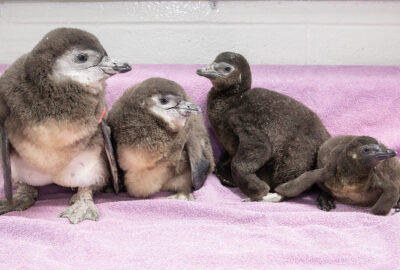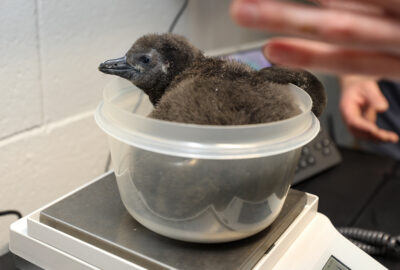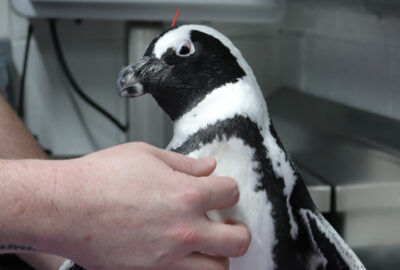How We Prepare Our African Penguin Chicks for Exhibit
Four African penguin chicks just joined the colony on exhibit. Learn what it takes to get them ready for their big debut.
By New England Aquarium on Thursday, June 20, 2024

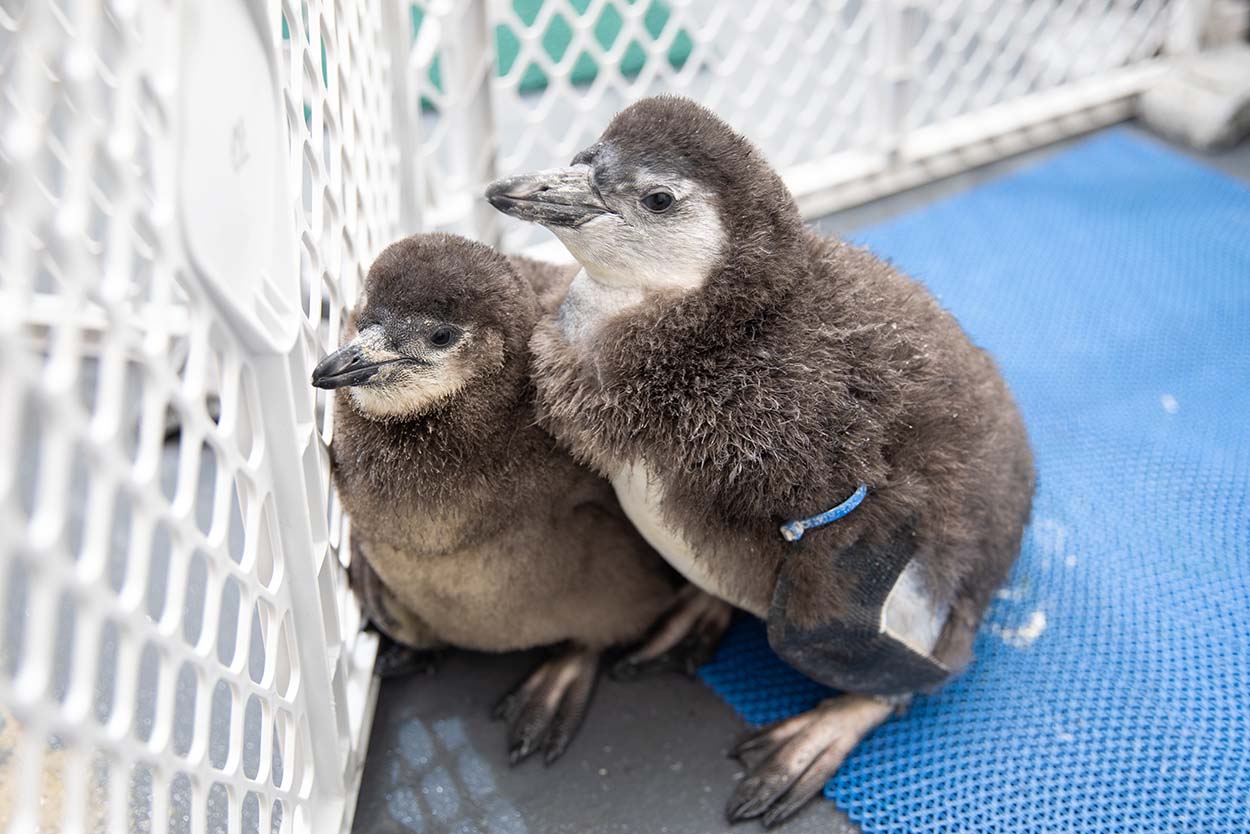
Updated July 10, 2024
“Bunker,” his sister “Althea,” and siblings “Oyster” and “Fitzpatrick”—the four African penguin chicks hatched at the Aquarium this spring—officially joined the rest of the colony on exhibit this week. Visitors to the Aquarium can now spot the quartet, identifiable by their juvenile grey feathers and by the colored bracelets on their wings, swimming and socializing with the 42 other birds in our colony.
Bunker, named after ship-to-ship bunkering along the southern coast of Africa, which presents a significant threat to endangered African penguins because of increased noise pollution, vessel traffic, and oil pollution, sports a brown bracelet on his left wing while Althea, named after Althea Westphal, founder the Southern African Foundation for the Conservation of Coastal Birds, wears a yellow bracelet on her right. Fitzpatrick, named for the FitzPatrick Institute of African Ornithology, is identifiable by the blue bracelet on his left wing. Oyster wears an orange bracelet on her right wing. Her name stems from the Oyster Cliffs mainland breeding site in Namibia.
For the past three months, our trainers have been working with the chicks behind the scenes to prepare them for their big debut. Read on to learn about four key skills our juvenile penguins practice before they’re prepared to join the colony full-time.
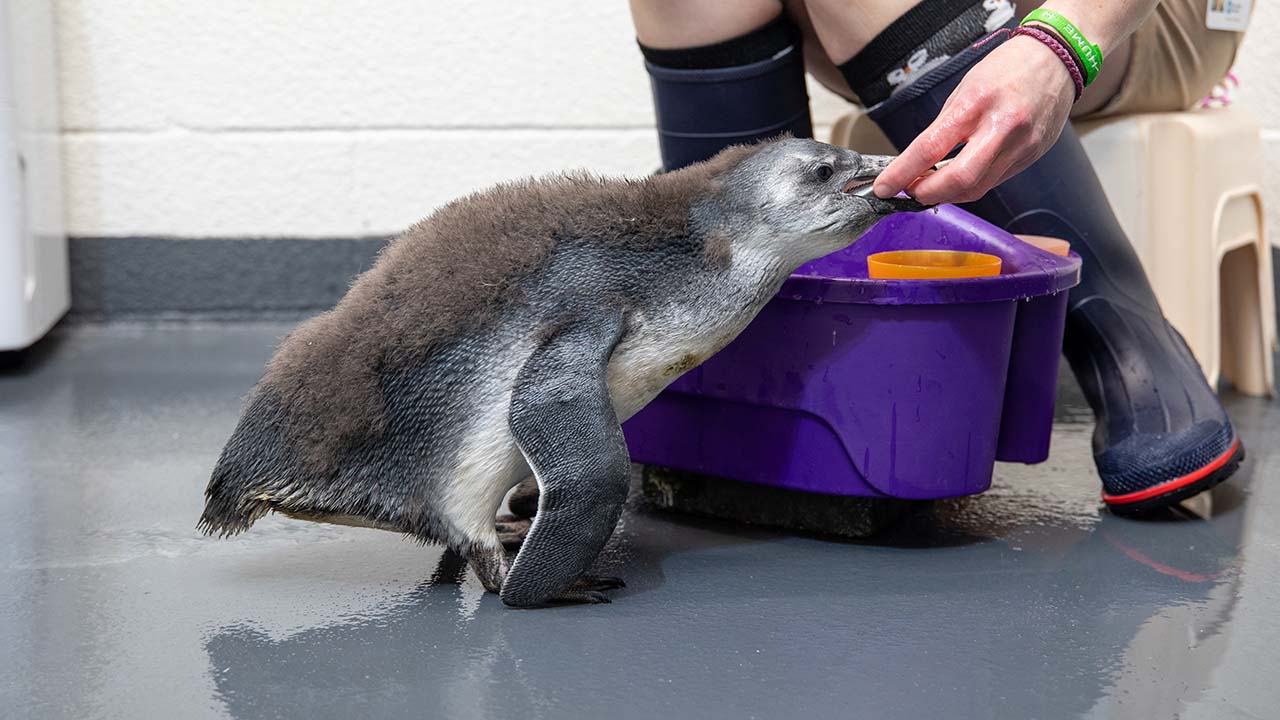
Hand-feeding
Hand-feeding is one of the earliest behaviors our trainers work on with the chicks. This gets them used to accepting food from trainers, rather than having formula or being fed by their parents, and acclimates the chicks to eating larger pieces of food and fish with bones. It’s important because hand-feeding is how all our adult penguins receive food on exhibit, and it helps our trainers monitor each bird’s well-being.
“When we wean the chicks, we usually start off with smaller pieces and work our way up, where we’re feeding whole small fish and then whole large fish,” said Assistant Curator of Penguins Eric Fox. “That’s really based on the chicks’ overall comfort in eating from us. I’d say all of our chicks caught on after a day or two of us presenting the food to them and helping them eat it.”
Socializing with adult penguins
This year, with four chicks growing up behind the scenes, the socialization process started between the juvenile group. “Even getting them used to each other took small steps,” Eric said, which included introducing the chicks to one another during feeding times and providing reinforcement for socially appropriate behavior between the birds, such as preening and calmly investigating one another. “We’d allow them supervised time together and then eventually removed ourselves from the equation as we were seeing behaviors we wanted to see,” Eric added.
Socializing with the adult penguins also happens in small steps. The team begins with supervised visits between the chicks and older, calmer birds behind-the-scenes, and incorporates those interactions into the chicks’ daily care routines. Eventually, the chicks work up to socializing with the adult penguins during short, supervised visits on the exhibit—but not before building the next skill: swimming.
Swimming
Swimming practice starts as soon as the chicks swap their first set of downy, fluffy feathers for sleek, waterproof ones. “We start with a kiddie pool,” Eric said, “and we fill it with an inch of water and try to feed them close to the pool, or even in the pool, to provide them with reinforcement.” Gradually, the trainers increase the level of water in the pool until the chicks are ready to move to the next stage: swimming tubs.
These deeper tubs allow the penguins to dive deeper and practice behaviors like preening in the water. The team will also bring an adult penguin back behind the scenes to demonstrate swimming behaviors to the chicks. By gradually extending the amount of time the chicks spend swimming behind the scenes, the team helps the chicks become more confident swimmers before heading to the exhibit. There, they can continue mirroring the adult penguins and practice important swimming behaviors, such as porpoising from the water.
Acclimating to the exhibit
“We want to get them used to the exhibit in small steps, just like we get them used to everything else,” Eric said. “There are five different islands for them to climb on, all having different territories for penguins that they need to navigate.”
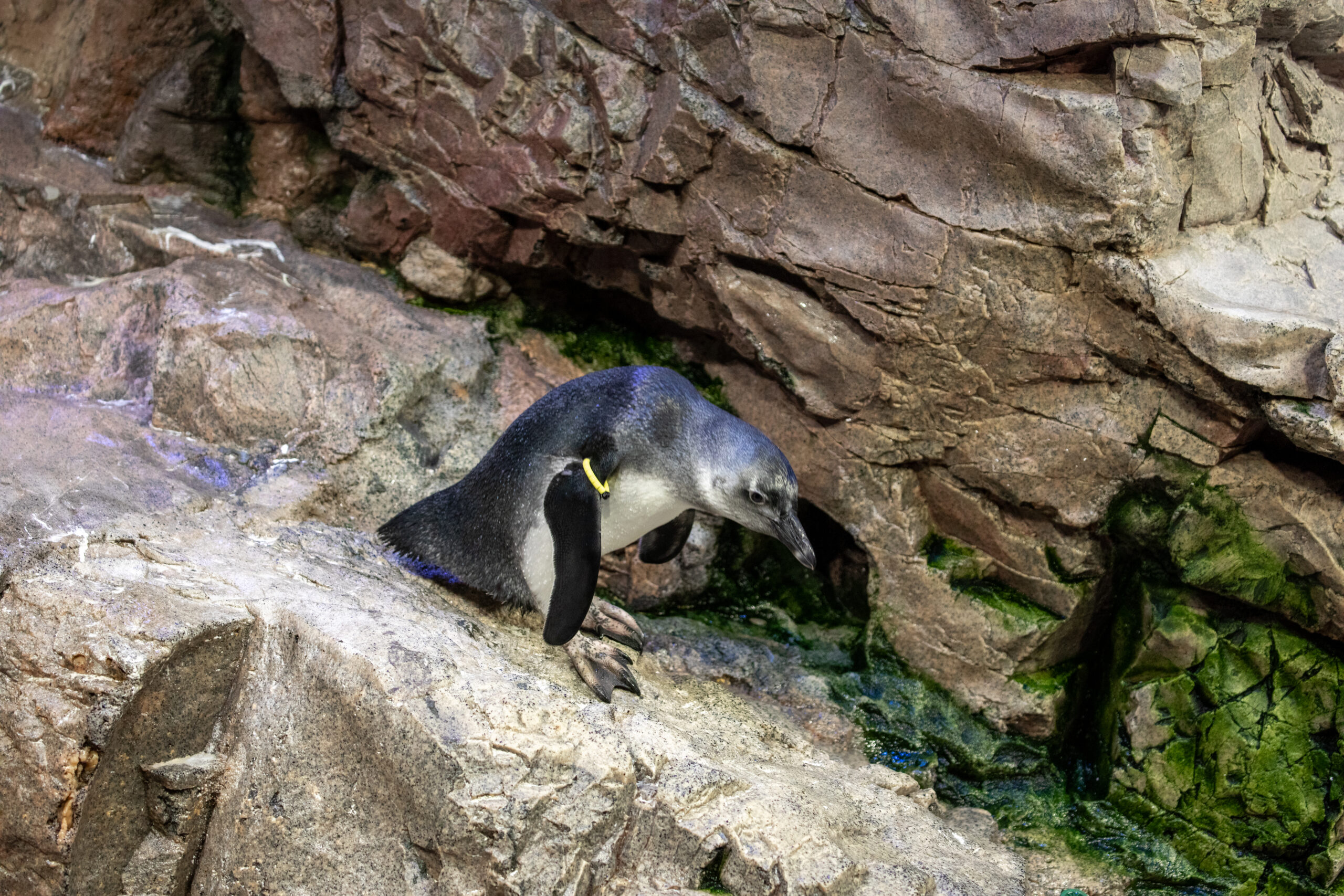
The chicks work up from short visits up to hour-long visits and eventually overnights. “We usually look for comfort when interacting with the other penguins, comfort exploring, and the ability to climb and navigate the islands,” Eric said.
Even though the two older chicks were introduced to the exhibit first, the team kept working closely with Bunker and Althea. “We’ll continue to build relationships with the chicks as part of our focus on animal well-being and husbandry,” Eric said. “A key aspect of that work entails training the birds to be more comfortable with handling so that things like routine medical exams are a more positive experience.”
While raising four chicks at once isn’t easy—“It’s four times the work,” Eric laughed—it’s been a great opportunity for the team, too.
“It’s incredibly rewarding to watch our penguins grow from tiny fluffballs that can fit in the palm of a hand to the adult-sized juveniles that they are today,” Eric said. “Not only does it show the dedication of our Animal Care team, but it’s also part of a much greater mission: To help support the Species Survival Plan for this endangered species. Knowing that African penguins could go extinct as soon as 2035, these chicks are a reminder that we are taking direct action toward the conservation of their species.”

